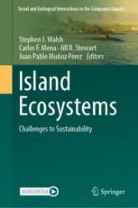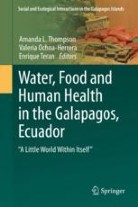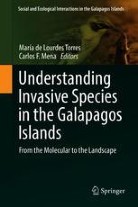
About this book series
The Galapagos Islands are a “living laboratory” for the study of evolution, environmental change, and conflicts between nature and society. Free of human predators for almost all its history, these islands have developed some of the most unique life forms on the planet, adapted to their harsh surroundings and living in ecological isolation. It was not until Charles Darwin’s famous visit in 1835, which helped inspire the theory of evolution that this Archipelago began to receive international recognition. The Galapagos Archipelago encompasses 11 large and 200 small islands totaling approximately 8,010 sq. km. This series will focus on the entire island archipelago, and it will emphasize the study and documentation of human-environment interactions on the four inhabited islands in the Galapagos: Isabela, Santa Cruz, San Cristobal, and Floreana. Together they constitute a well-defined “natural laboratory” for the study of human-environment interactions as they vary in fundamentally important ways.
- Electronic ISSN
- 2195-1063
- Print ISSN
- 2195-1055
- Series Editor
-
- Stephen J. Walsh,
- Carlos F. Mena
Book titles in this series
-

-
Water, Food and Human Health in the Galapagos, Ecuador
"A Little World Within Itself"
- Editors:
-
- Amanda L. Thompson
- Valeria Ochoa-Herrera
- Enrique Teran
- Copyright: 2022
Available Renditions
- Hard cover
- Soft cover
- eBook

-
Land Cover and Land Use Change on Islands
Social & Ecological Threats to Sustainability
- Editors:
-
- Stephen J. Walsh
- Diego Riveros-Iregui
- Javier Arce-Nazario
- Philip H. Page
- Copyright: 2020
Available Renditions
- Hard cover
- Soft cover
- eBook

-
Sustainable Energy Mix in Fragile Environments
Frameworks and Perspectives
- Editors:
-
- Mary-Ellen Tyler
- Copyright: 2018
Available Renditions
- Hard cover
- Soft cover
- eBook

-
Understanding Invasive Species in the Galapagos Islands
From the Molecular to the Landscape
- Editors:
-
- María de Lourdes Torres
- Carlos F. Mena
- Copyright: 2018
Available Renditions
- Hard cover
- Soft cover
- eBook

